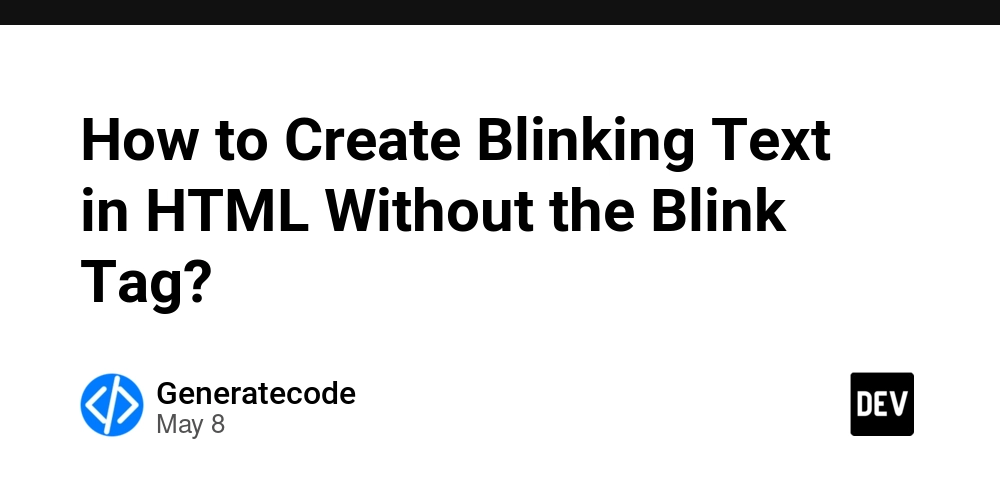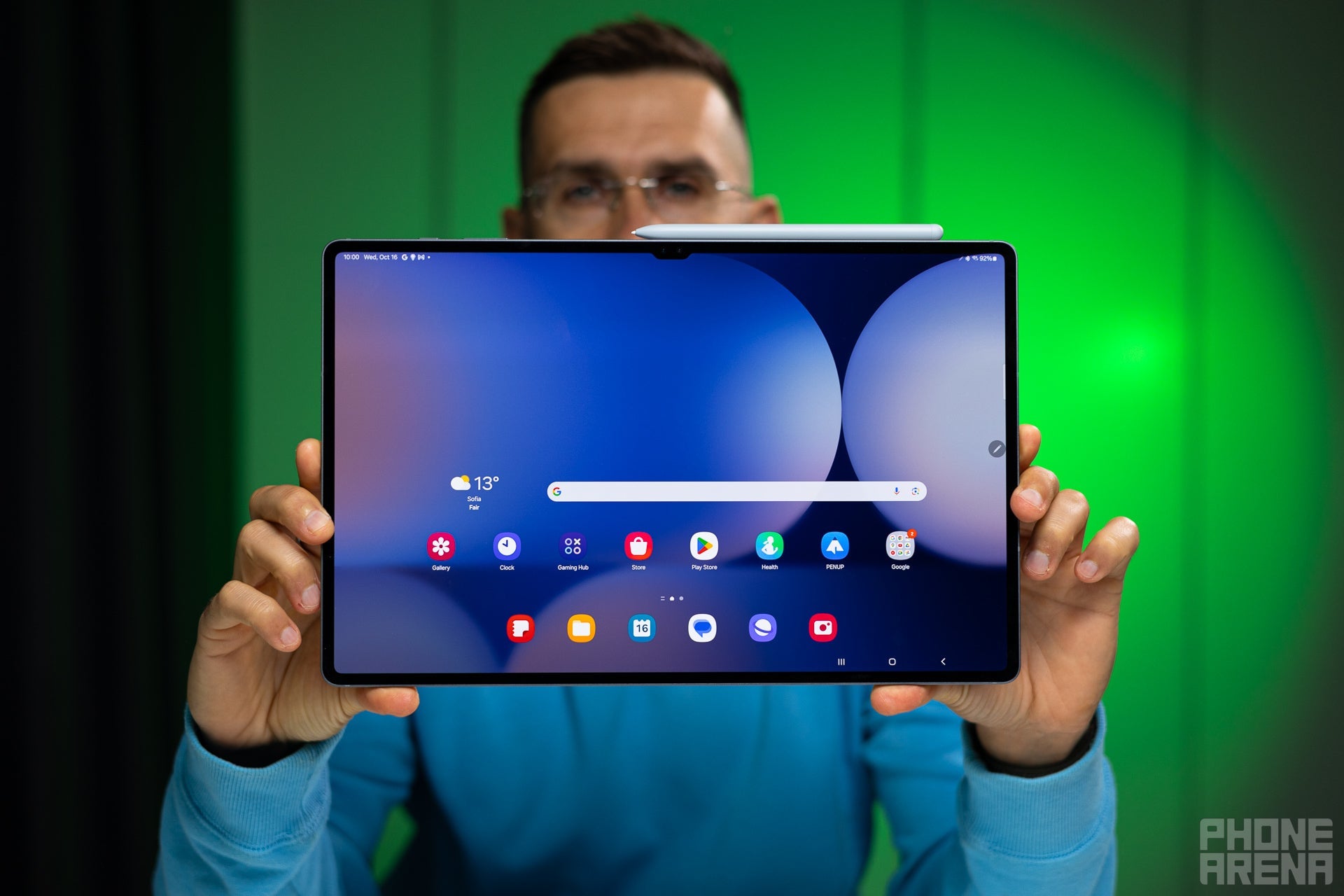How to Create Blinking Text in HTML Without the Blink Tag?
Introduction Creating visually engaging web content often leads developers to seek ways to draw attention to specific text. One such effect is blinking text, which was once achieved using the deprecated tag. However, as web standards evolved, the tag fell out of favor, leaving developers wondering: Is there a standards compliant way of making text blink? In this article, we'll explore modern methods that achieve a similar effect without relying on deprecated elements. Why the Tag Was Abandoned Web standards have changed significantly since the days of the tag. Introduced in the early HTML specifications, it was intended to help highlight important text. However, as web design principles have matured, the tag was found to be problematic. Here’s why: Usability Issues: Blinking text can be distracting and annoying to users, leading to a poor user experience. Accessibility Concerns: People with certain visual impairments or distractions can find blinking text disorienting. Inconsistent Support: As browsers evolved, the tag was never supported consistently across all major browsers, leading to unpredictable behavior in different environments. Because of these issues, developers have sought alternative methods that maintain better accessibility and usability while creating eye-catching effects. Using CSS for Blinking Text The most straightforward way to create a blinking effect today is through CSS animations. CSS allows developers to create smooth transitions and animations without the need for deprecated HTML elements. Step 1: Basic HTML Structure Start by creating a basic HTML document: Blinking Text This text will blink! Step 2: CSS for Blinking Effect Next, add CSS to your external stylesheet (styles.css) to create the blinking effect: .blinking { animation: blinker 1s step-end infinite; color: red; /* Change color as preferred */ } @keyframes blinker { 50% { opacity: 0; } } Explanation of the CSS Here’s a breakdown of the CSS: Animation Property: The .blinking class includes an animation property that applies the blinker animation, which lasts 1 second, uses a stepping function for a sharp transition, and repeats indefinitely. Keyframes: The @keyframes rule defines the animation. At 50% of the duration, the opacity is set to 0 (invisible), creating a blinking effect as it alternates between visible and invisible. Step 3: Testing the Blinking Effect Open the HTML file in a browser, and you should see the text blinking on the screen. You can easily adjust the duration and animation style by modifying the CSS properties. Alternative: Using JavaScript for Blinking Text Another method to create a blinking text effect is by using JavaScript. This method provides more control over the blinking behavior and can allow for more complex interactions. Step 1: Basic HTML Structure You can utilize the earlier HTML structure. Step 2: JavaScript Code In the section of your HTML, include a script to carry out the blinking: const blinkingText = document.querySelector('.blinking'); setInterval(() => { blinkingText.style.visibility = (blinkingText.style.visibility === 'hidden' ? '' : 'hidden'); }, 1000); Explanation of the JavaScript Code This script selects the element with the class .blinking and sets an interval to toggle its visibility every second (1000 milliseconds). It creates a similar blinking effect to that of the CSS method. Conclusion While the tag has been relegated to the history books, modern CSS techniques and JavaScript provide powerful alternatives for creating blinking text effects. By leveraging styles and scripts, we can enhance the user interface while adhering to current standards of web accessibility and usability. By utilizing these methods, web developers can create engaging and compliant effects to capture the attention of their audience without reverting to deprecated tags. Frequently Asked Questions (FAQ) Can blinking text improve user engagement? While blinking text can attract attention, it's essential to use it sparingly to avoid overwhelming users. Use it for crucial notifications or alerts. Is it possible to customize the blinking speed? Yes, both CSS and JavaScript methods allow for easy adjustments. You can modify the duration in the animation or change the interval in the JavaScript setInterval method. Are there any SEO implications with blinking text? Blinking text itself does not have direct implications for SEO, but be cautious not to overuse it, as it can negatively affect user experience, leading to higher bounce rates. What other visual effects can I implement on my website? Consider using hover effects, transitions, or animations to enhance user interaction and maintain engagement throughout the site.

Introduction
Creating visually engaging web content often leads developers to seek ways to draw attention to specific text. One such effect is blinking text, which was once achieved using the deprecated tag. However, as web standards evolved, the tag fell out of favor, leaving developers wondering: Is there a standards compliant way of making text blink? In this article, we'll explore modern methods that achieve a similar effect without relying on deprecated elements.
Why the
Web standards have changed significantly since the days of the tag. Introduced in the early HTML specifications, it was intended to help highlight important text. However, as web design principles have matured, the tag was found to be problematic. Here’s why:
- Usability Issues: Blinking text can be distracting and annoying to users, leading to a poor user experience.
- Accessibility Concerns: People with certain visual impairments or distractions can find blinking text disorienting.
-
Inconsistent Support: As browsers evolved, the
tag was never supported consistently across all major browsers, leading to unpredictable behavior in different environments.
Because of these issues, developers have sought alternative methods that maintain better accessibility and usability while creating eye-catching effects.
Using CSS for Blinking Text
The most straightforward way to create a blinking effect today is through CSS animations. CSS allows developers to create smooth transitions and animations without the need for deprecated HTML elements.
Step 1: Basic HTML Structure
Start by creating a basic HTML document:
Blinking Text
This text will blink!
Step 2: CSS for Blinking Effect
Next, add CSS to your external stylesheet (styles.css) to create the blinking effect:
.blinking {
animation: blinker 1s step-end infinite;
color: red; /* Change color as preferred */
}
@keyframes blinker {
50% { opacity: 0; }
}
Explanation of the CSS
Here’s a breakdown of the CSS:
-
Animation Property: The
.blinkingclass includes an animation property that applies theblinkeranimation, which lasts 1 second, uses a stepping function for a sharp transition, and repeats indefinitely. -
Keyframes: The
@keyframesrule defines the animation. At 50% of the duration, the opacity is set to 0 (invisible), creating a blinking effect as it alternates between visible and invisible.
Step 3: Testing the Blinking Effect
Open the HTML file in a browser, and you should see the text blinking on the screen. You can easily adjust the duration and animation style by modifying the CSS properties.
Alternative: Using JavaScript for Blinking Text
Another method to create a blinking text effect is by using JavaScript. This method provides more control over the blinking behavior and can allow for more complex interactions.
Step 1: Basic HTML Structure
You can utilize the earlier HTML structure.
Step 2: JavaScript Code
In the section of your HTML, include a script to carry out the blinking:
Explanation of the JavaScript Code
- This script selects the element with the class
.blinkingand sets an interval to toggle its visibility every second (1000 milliseconds). It creates a similar blinking effect to that of the CSS method.
Conclusion
While the tag has been relegated to the history books, modern CSS techniques and JavaScript provide powerful alternatives for creating blinking text effects. By leveraging styles and scripts, we can enhance the user interface while adhering to current standards of web accessibility and usability.
By utilizing these methods, web developers can create engaging and compliant effects to capture the attention of their audience without reverting to deprecated tags.
Frequently Asked Questions (FAQ)
Can blinking text improve user engagement?
While blinking text can attract attention, it's essential to use it sparingly to avoid overwhelming users. Use it for crucial notifications or alerts.
Is it possible to customize the blinking speed?
Yes, both CSS and JavaScript methods allow for easy adjustments. You can modify the duration in the animation or change the interval in the JavaScript setInterval method.
Are there any SEO implications with blinking text?
Blinking text itself does not have direct implications for SEO, but be cautious not to overuse it, as it can negatively affect user experience, leading to higher bounce rates.
What other visual effects can I implement on my website?
Consider using hover effects, transitions, or animations to enhance user interaction and maintain engagement throughout the site.








































































































































































![[The AI Show Episode 146]: Rise of “AI-First” Companies, AI Job Disruption, GPT-4o Update Gets Rolled Back, How Big Consulting Firms Use AI, and Meta AI App](https://www.marketingaiinstitute.com/hubfs/ep%20146%20cover.png)









































































































































































































































































































































































![Honor 400 series officially launching on May 22 as design is revealed [Video]](https://i0.wp.com/9to5google.com/wp-content/uploads/sites/4/2025/05/honor-400-series-announcement-1.png?resize=1200%2C628&quality=82&strip=all&ssl=1)














![Beats Studio Pro Wireless Headphones Now Just $169.95 - Save 51%! [Deal]](https://www.iclarified.com/images/news/97258/97258/97258-640.jpg)








































































































